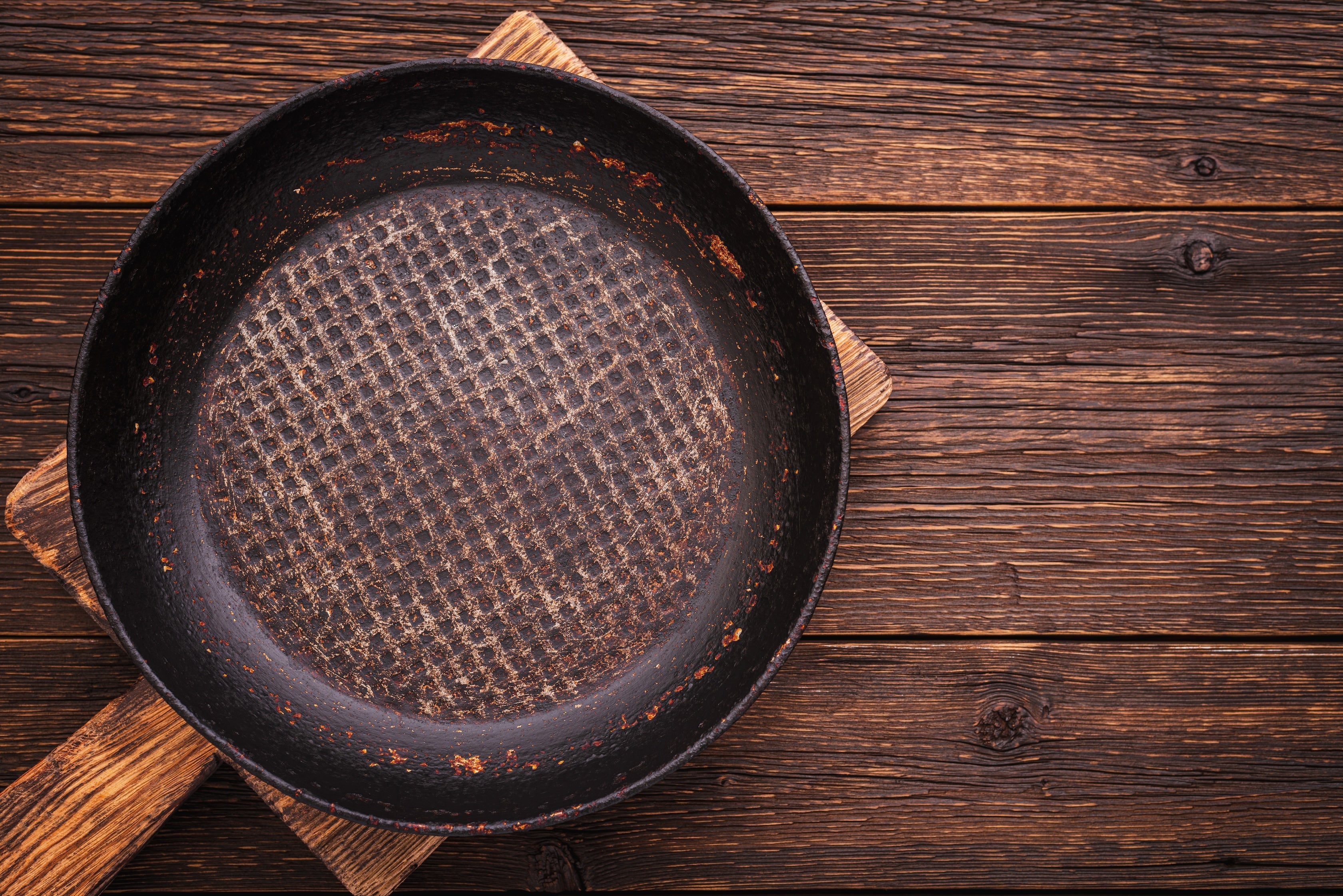Cast iron skillets have been kitchen staples for generations, for good reason. They’re durable, versatile, and they give your steak the perfect crispy sear every time.
But cast iron is also controversial. If you go on TikTok, you’ll find thousands of videos debating whether or not to use soap on your cast iron, or the right way to season your skillet. We’re here to clear up some confusion on cast iron care so you can keep cooking in yours for years to come.
Why do you need to season your cast iron?
Is there anything worse than scraping food residue off of your pan after making dinner? Cast iron is so beloved partly for its non-stick capabilities — but it takes some work to achieve the perfect non-stick seasoning.
The term “seasoning” actually refers to a layer of carbonized oil that creates a natural non-stick coating for cast iron skillets that also prevents rust. People love it because it’s a tried-and-true method for easy cooking, without the harmful chemicals that have become synonymous with non-stick cookware.
How to season your cast iron
Set aside a few hours on a lazy Sunday to properly care for your cast iron, because this can be a time-consuming but rewarding process. Here’s how to season your cast iron:
- Thoroughly wash your skillet (more on that later) to prepare for seasoning.
- Put your skillet into a 375℉ oven for 10 minutes to remove any water and warm it through.
- Choose a neutral oil: flaxseed oil, grapeseed oil, canola oil, and avocado oil are the most popular.
- Remove your skillet, and increase the oven temperature to 500℉
- Add enough oil to coat your entire skillet (including the outside and handle), and rub it in with a paper towel.
- Place the skillet onto a baking sheet upside down and bake in the oven for an hour.
- Turn off your oven and allow the skillet to cool inside.
- Add another small amount of oil and rub it in.
Take a good look at the finish of your skillet. It should be matte black, smooth, and not at all sticky (if it’s sticky, you’re using too much oil). If you’re still noticing a sheen or unevenness on your coating, repeat steps 5-8 until you’re happy with your seasoning — and trust the process. With a new cast iron pan (or a very old one in rough shape), it often takes multiple rounds of oiling and baking to achieve your desired seasoning, but it will be worth it!
When should you re-season your cast iron?
Over time, your seasoning can break down due to acidic foods, high heat, or excessive scrubbing. While proper care can help you re-season less often, you still might need to re-season if you notice your pan looks dried out, rusty or if it starts to lose the matte-black finish.
How to clean your cast iron
Forget what you’ve been told: you can use dish soap on your cast iron skillet.
Many cast iron fanatics have held onto traditional wisdom that soap will destroy your skillet — but iron is pretty durable. This tip comes from a time when harsh lye-based soaps could strip your seasoning and potentially cause rust. But today’s dish soaps are quite mild and won’t cause damage to your cast iron, as long as you care for it properly afterwards.
Add a small amount of mild dish soap to your skillet, and scrub with a warm, wet sponge (but never use a steel wool or other metal scrubbers!) to remove any food residue. Rinse with warm water and promptly dry your skillet. To make sure you don’t have any moisture left behind, put your cast iron back on the stove over medium heat for a few minutes. Then, rub in a few drops of your preferred seasoning oil before storing.
Soap-free cleaning methods
If you still don’t feel right about using soap, that’s ok, too. You can get your skillet equally as clean the old-fashioned way.
Remove any food scraps with warm water and a sturdy brush, wooden spatula, or even coarse kosher salt. Once there’s no food left behind, dry it well with a paper towel and put your skillet back on the stove to remove any remaining moisture. As always, rubbing in a few drops of neutral oil will help protect your seasoning until next time you cook.
Now that you know how to take care of your cast iron, it’s time to put it to good use. Order your favorite cut of steak from the Prime House Direct and get to cooking!

